Abstract
A complementary DNA for the small subunit of ribulose-1,5-bisphosphate carboxylase/oxygenase (Rubisco) was cloned from tobacco (Nicotiana tabacum) and fused in the antisense orientation to the cauliflower mosaic virus 35S promoter. This antisense gene was introduced into the tobacco genome, and the resulting transgenic plants were analyzed to assess the effect of the antisense RNA on Rubisco activity and photosynthesis. The mean content of extractable Rubisco activity from the leaves of 10 antisense plants was 18% of the mean level of activity of control plants. The soluble protein content of the leaves of anti-small subunit plants was reduced by the amount equivalent to the reduction in Rubisco. There was little change in phosphoribulokinase activity, electron transport, and chlorophyll content, indicating that the loss of Rubisco did not affect these other components of photosynthesis. However, there was a significant reduction in carbonic anhydrase activity. The rate of CO2 assimilation measured at 1000 micromoles quanta per square meter per second, 350 microbars CO2, and 25°C was reduced by 63% (mean value) in the antisense plants and was limited by Rubisco activity over a wide range of intercellular CO2 partial pressures (pi). In control leaves, Rubisco activity only limited the rate of CO2 assimilation below a pi of 400 microbars. Despite the decrease in photosynthesis, there was no reduction in stomatal conductance in the antisense plants, and the stomata still responded to changes in pi. The unchanged conductance and lower CO2 assimilation resulted in a higher pi, which was reflected in greater carbon isotope discrimination in the leaves of the antisense plants. These results suggest that stomatal function is independent of total leaf Rubisco activity.
Full text
PDF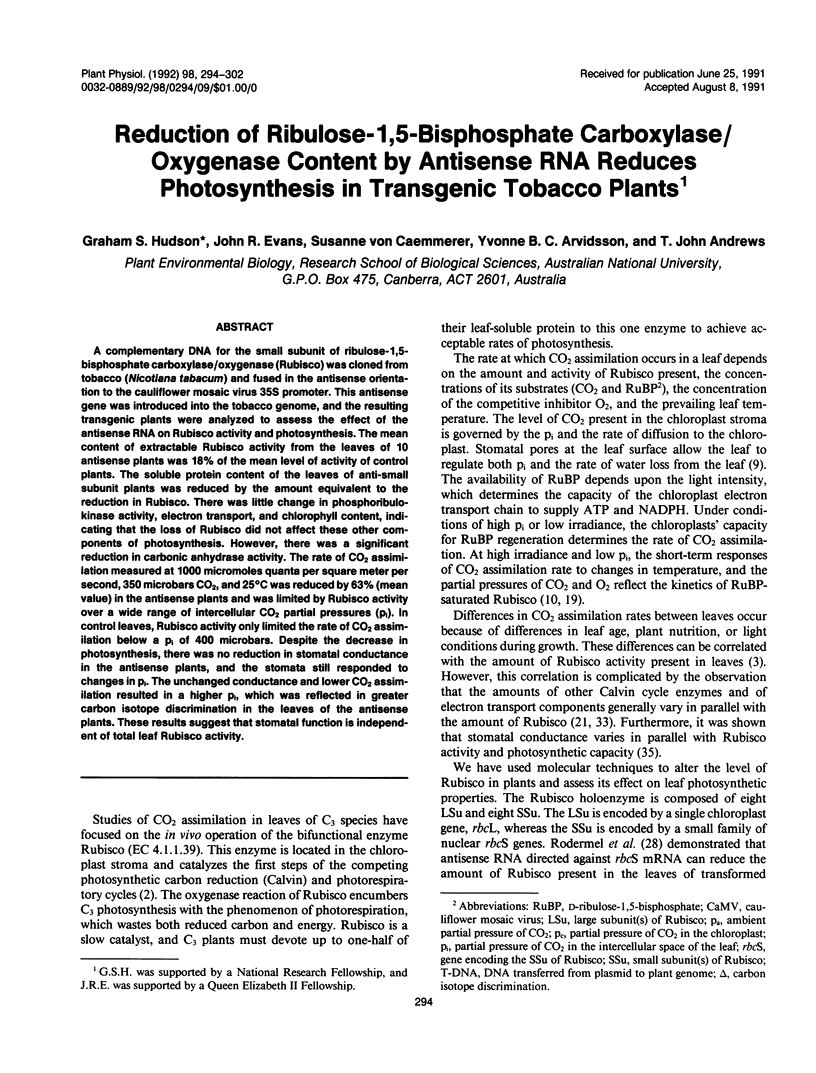
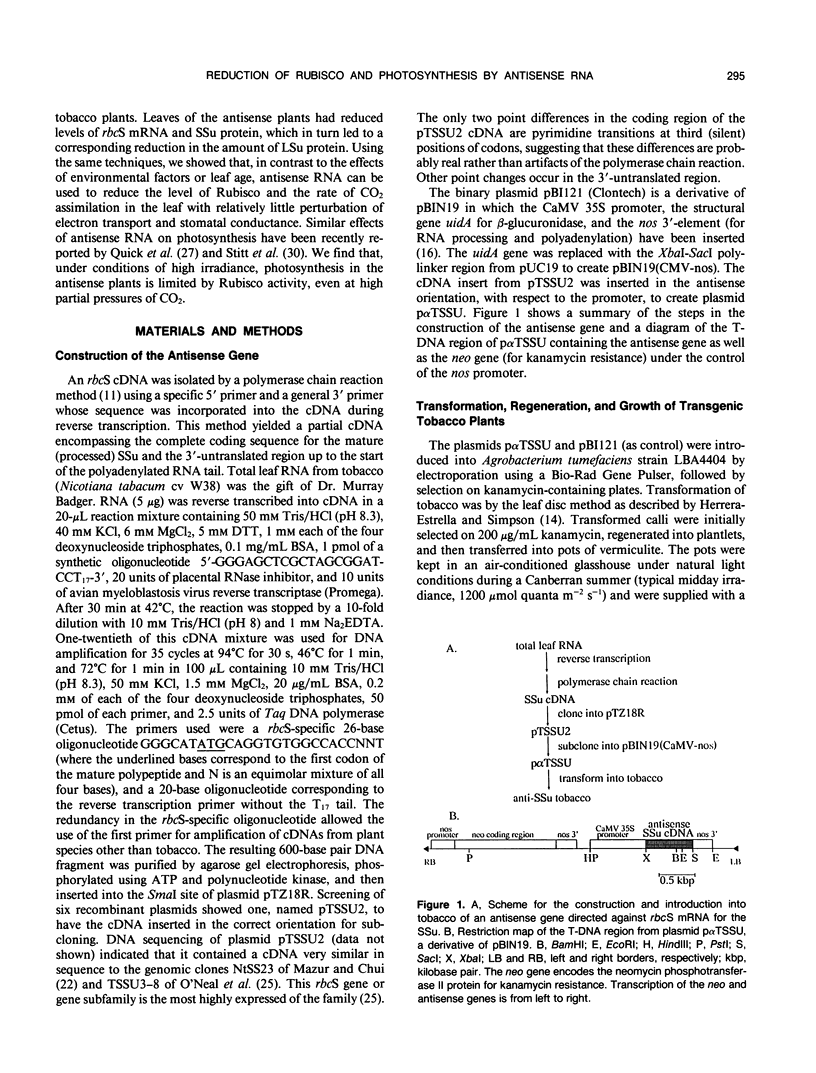
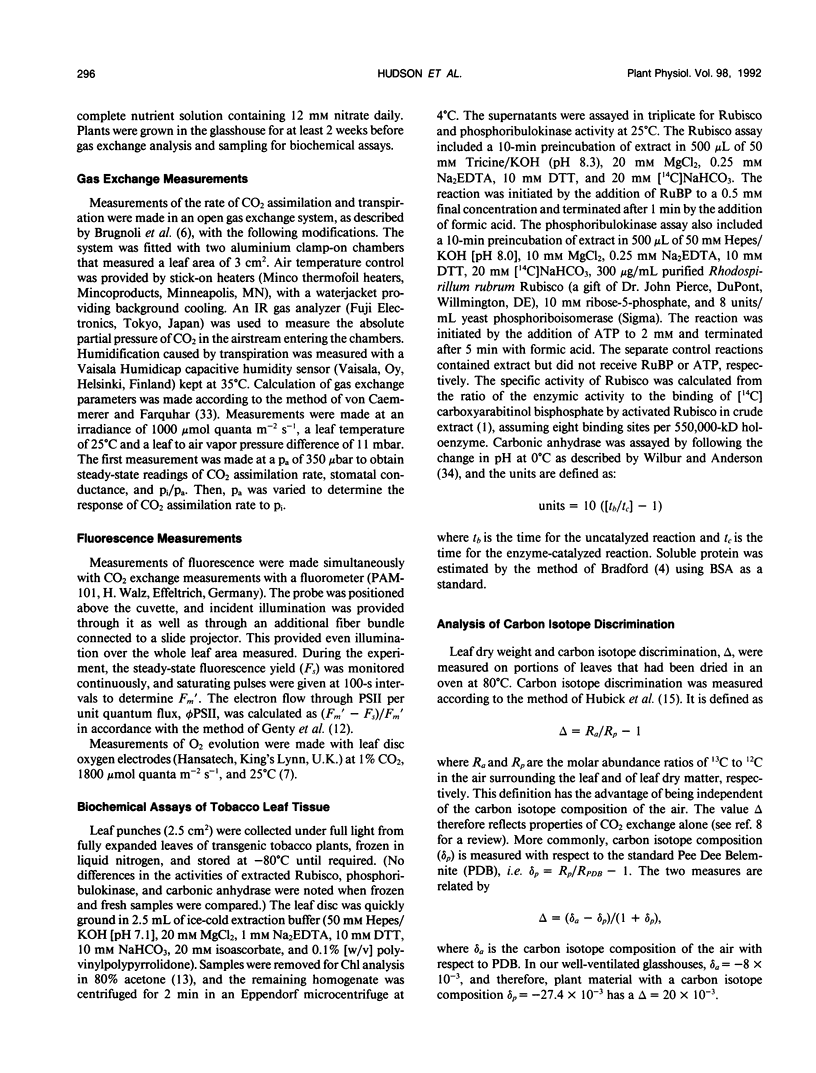
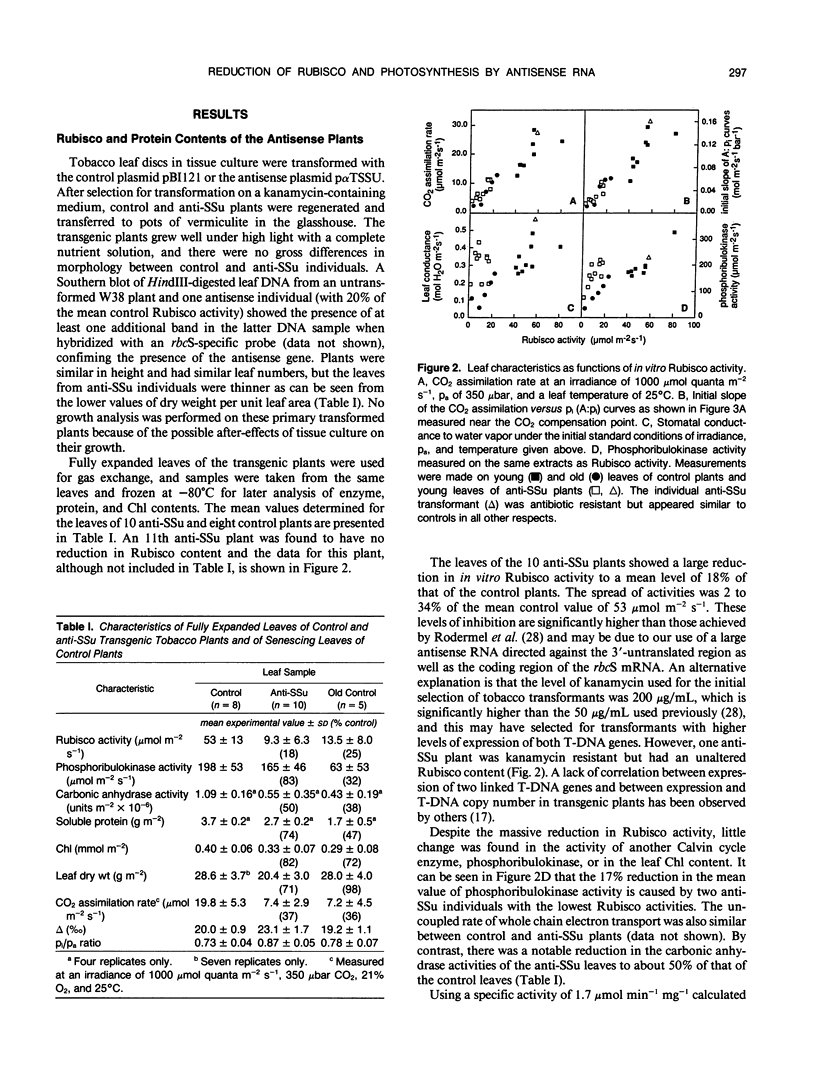
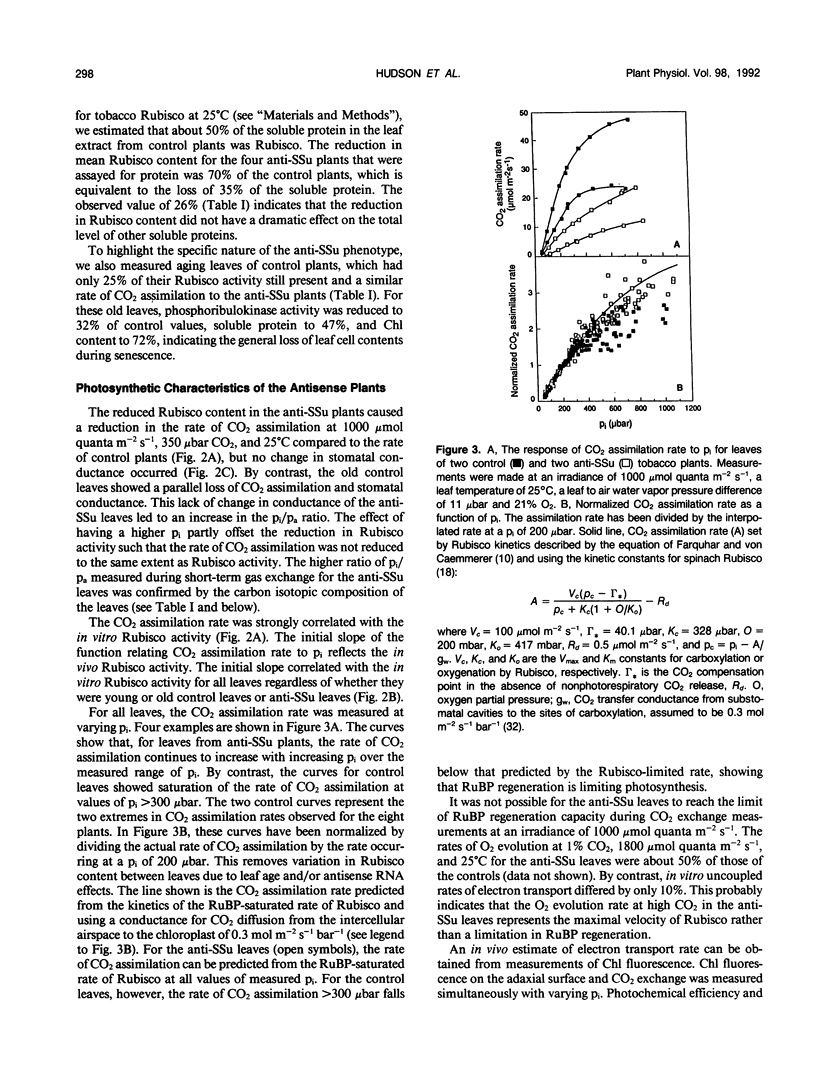
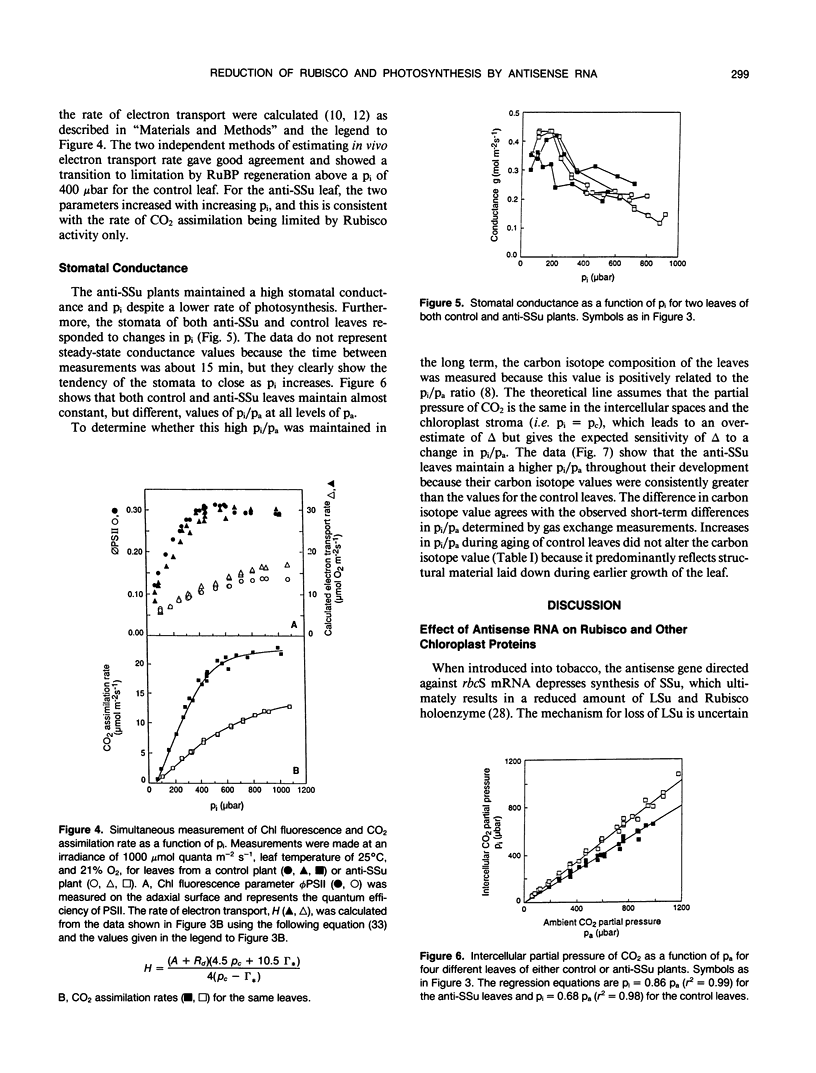
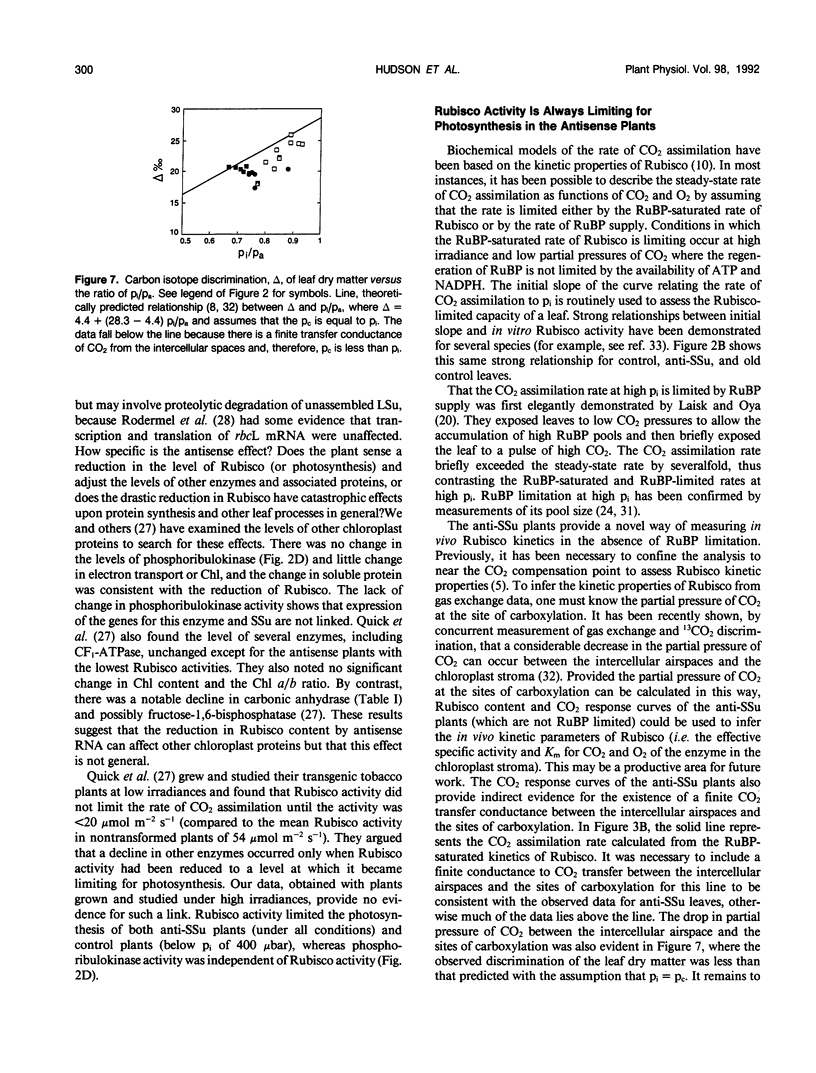
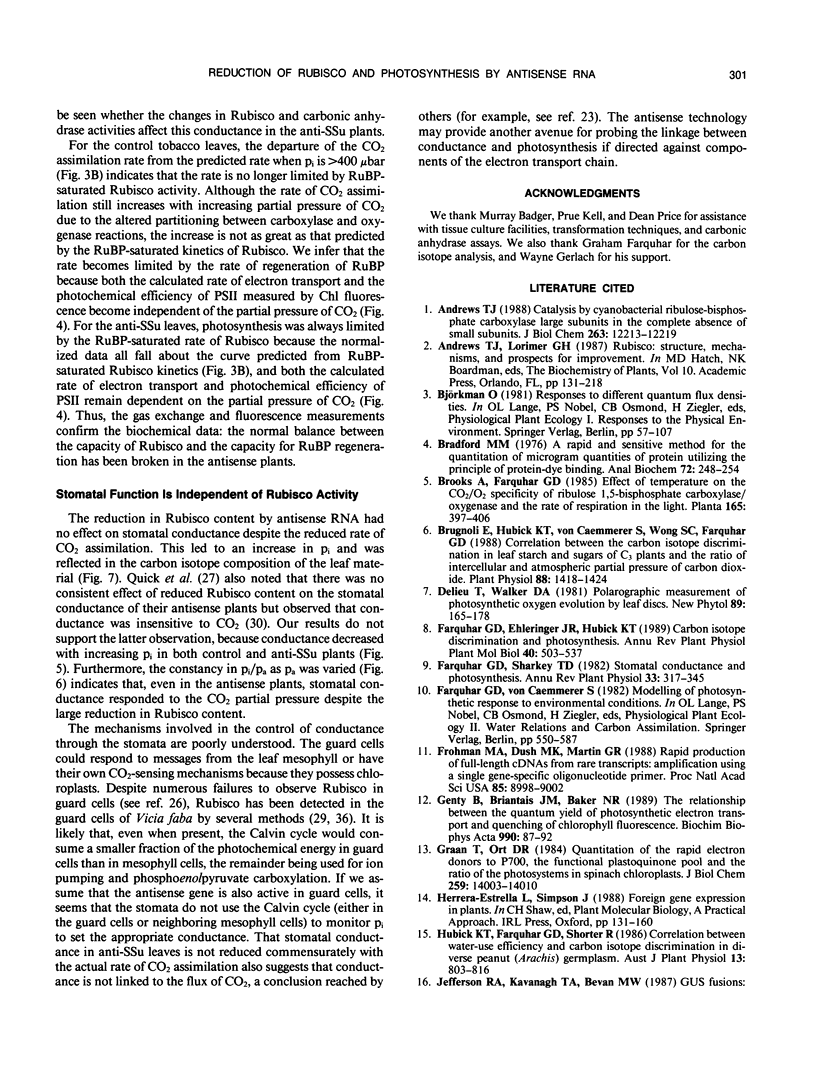
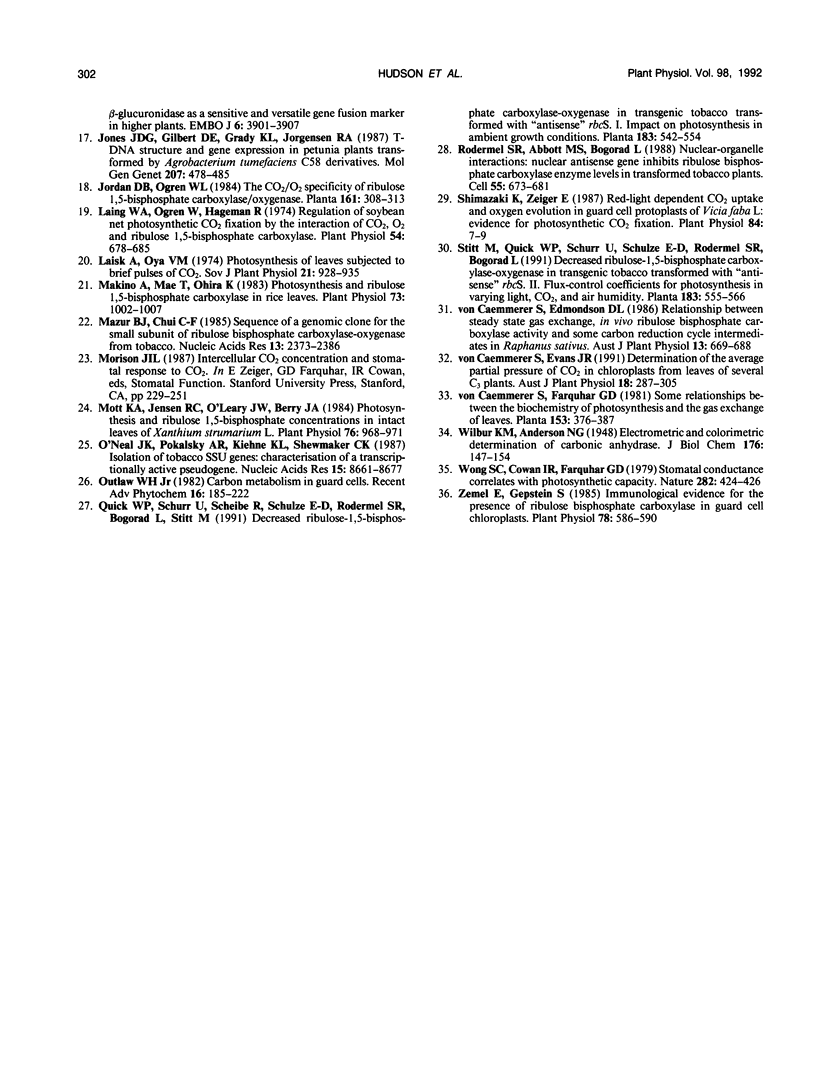
Selected References
These references are in PubMed. This may not be the complete list of references from this article.
- Andrews T. J. Catalysis by cyanobacterial ribulose-bisphosphate carboxylase large subunits in the complete absence of small subunits. J Biol Chem. 1988 Sep 5;263(25):12213–12219. [PubMed] [Google Scholar]
- Bradford M. M. A rapid and sensitive method for the quantitation of microgram quantities of protein utilizing the principle of protein-dye binding. Anal Biochem. 1976 May 7;72:248–254. doi: 10.1016/0003-2697(76)90527-3. [DOI] [PubMed] [Google Scholar]
- Brugnoli E., Hubick K. T., von Caemmerer S., Wong S. C., Farquhar G. D. Correlation between the Carbon Isotope Discrimination in Leaf Starch and Sugars of C(3) Plants and the Ratio of Intercellular and Atmospheric Partial Pressures of Carbon Dioxide. Plant Physiol. 1988 Dec;88(4):1418–1424. doi: 10.1104/pp.88.4.1418. [DOI] [PMC free article] [PubMed] [Google Scholar]
- Frohman M. A., Dush M. K., Martin G. R. Rapid production of full-length cDNAs from rare transcripts: amplification using a single gene-specific oligonucleotide primer. Proc Natl Acad Sci U S A. 1988 Dec;85(23):8998–9002. doi: 10.1073/pnas.85.23.8998. [DOI] [PMC free article] [PubMed] [Google Scholar]
- Graan T., Ort D. R. Quantitation of the rapid electron donors to P700, the functional plastoquinone pool, and the ratio of the photosystems in spinach chloroplasts. J Biol Chem. 1984 Nov 25;259(22):14003–14010. [PubMed] [Google Scholar]
- Laing W. A. Regulation of Soybean Net Photosynthetic CO(2) Fixation by the Interaction of CO(2), O(2), and Ribulose 1,5-Diphosphate Carboxylase. Plant Physiol. 1974 Nov;54(5):678–685. doi: 10.1104/pp.54.5.678. [DOI] [PMC free article] [PubMed] [Google Scholar]
- Makino A., Mae T., Ohira K. Photosynthesis and Ribulose 1,5-Bisphosphate Carboxylase in Rice Leaves: Changes in Photosynthesis and Enzymes Involved in Carbon Assimilation from Leaf Development through Senescence. Plant Physiol. 1983 Dec;73(4):1002–1007. doi: 10.1104/pp.73.4.1002. [DOI] [PMC free article] [PubMed] [Google Scholar]
- Mazur B. J., Chui C. F. Sequence of a genomic DNA clone for the small subunit of ribulose bis-phosphate carboxylase-oxygenase from tobacco. Nucleic Acids Res. 1985 Apr 11;13(7):2373–2386. doi: 10.1093/nar/13.7.2373. [DOI] [PMC free article] [PubMed] [Google Scholar]
- Mott K. A., Jensen R. G., O'leary J. W., Berry J. A. Photosynthesis and Ribulose 1,5-Bisphosphate Concentrations in Intact Leaves of Xanthium strumarium L. Plant Physiol. 1984 Dec;76(4):968–971. doi: 10.1104/pp.76.4.968. [DOI] [PMC free article] [PubMed] [Google Scholar]
- O'Neal J. K., Pokalsky A. R., Kiehne K. L., Shewmaker C. K. Isolation of tobacco SSU genes: characterization of a transcriptionally active pseudogene. Nucleic Acids Res. 1987 Nov 11;15(21):8661–8677. doi: 10.1093/nar/15.21.8661. [DOI] [PMC free article] [PubMed] [Google Scholar]
- Rodermel S. R., Abbott M. S., Bogorad L. Nuclear-organelle interactions: nuclear antisense gene inhibits ribulose bisphosphate carboxylase enzyme levels in transformed tobacco plants. Cell. 1988 Nov 18;55(4):673–681. doi: 10.1016/0092-8674(88)90226-7. [DOI] [PubMed] [Google Scholar]
- Shimazaki K., Zeiger E. Red Light-Dependent CO(2) Uptake and Oxygen Evolution in Guard Cell Protoplasts of Vicia faba L.: Evidence for Photosynthetic CO(2) Fixation. Plant Physiol. 1987 May;84(1):7–9. doi: 10.1104/pp.84.1.7. [DOI] [PMC free article] [PubMed] [Google Scholar]
- Zemel E., Gepstein S. Immunological evidence for the presence of ribulose bisphosphate carboxylase in guard cell chloroplasts. Plant Physiol. 1985 Jul;78(3):586–590. doi: 10.1104/pp.78.3.586. [DOI] [PMC free article] [PubMed] [Google Scholar]


